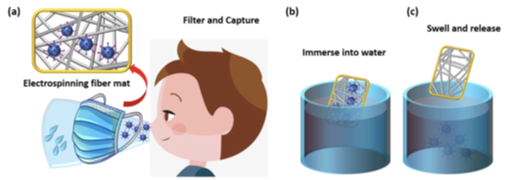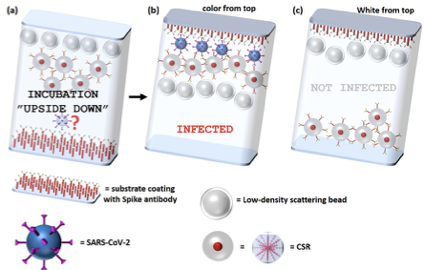The term “liquid crystal” is best known to the general public for its use in liquid crystal displays (LCDs), but actually “liquid crystals” have meaning and application that are much broader. Nature uses the liquid crystalline state ubiquitously, for example in the cell membranes of all living organisms, and their enormous application potential by humans has only started to be explored. In BIOFLICS, we want to use the ability of liquid crystal phases to assemble themselves into well-ordered arrangements, to develop a simple and reliable test for viruses and bacteria causing respiratory diseases, thus supportin global health. One type of liquid crystal that we will use arranges in such a way that it reflects color in the presence of a pathogen but, in contrast to standard home tests like pregnancy tests, these colors are also “polarized”, like the two movies being shown simultaneously, one for each eye, in a 3D cinema. Using technology no more advanced than the components of the 3D cinema goggles, we can use this to boost the signal-to-noise ratio of the test enormously, which we hope will reduce the detection limit to the level that asymptomatic virus carriers can be detected. To bring the sample to the test, we will develop filters for face masks that the patient wears in order to replace the unpleasant nose or throat swabbing currently used for COVID-19 testing. After the patient has breathed through the filter for a certain time, it is immersed in water to reveal the result. This result will be more detailed, going beyond the normal positive/negative, and should allow an estimation of the quantity of the pathogen (s). While our main focus is on virus detection, for instance for SARS-CoV-2 and Influenza, we will also take the first steps to detect bacteria with a minimum of resources, using another type of liquid crystal that features “anchor sites” for toxins produced by bacteria. If the toxin anchors, the liquid crystal changes its appearance, telling the user that the bacterium is present in the sample. Our results will be shared openly, in order to enable local manufacturing of many components and maximize the availability of the testing solution to everyone, regardless of location and financial status. Since testing is done entirely by the patients on their own, our solution will not require medical professionals, relieving the healthcare system and allowing persons to get test results whenever they want, without delay.

The BIOFLICS concept for Face Mask Sampling (FMS). (a) A patient wears a face mask equipped with an electrospun non-woven filter optimized for FMS. (b) The filter is removed and immersed in a transport medium for release of any captured pathogens. In case of soluble fibers, the polymer becomes part of the medium, whereas swellable fibers (c) are removed.

Our RAT detection scheme illustrated for the case of SARS-CoV-2 (not to scale). The test is incubated upside down (a), allowing analyte to bind to the transparent substrate; CSRs and cenospheres are released after prescribed time. Testing right side up yields color pattern response if pathogen is present, since it tethers CSRs to the transparent substrate (b), or white response without pathogen, as gravity then brings cenospheres up and CSRs down (c).






